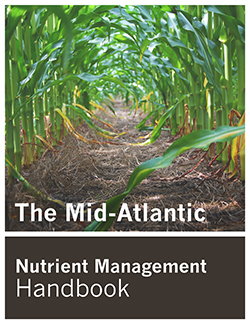The Mid-Atlantic Nutrient Management Handbook
ID
CSES-122P

This publication is available in PDF format only.
Delaware, Pennsylvania, Maryland, Virginia, and West Virginia, and Virginia, the five states in the Mid-Atlantic region, all require Certified Nutrient Management Plans to be completed for certain agricultural programs. The Mid-Atlantic Regional Nutrient Management Handbook is a revision and update of the former nutrient management training manual for the Chesapeake Bay watershed (Nagle et al., 2000), which was written by extension specialists and researchers from Virginia, Pennsylvania, and Maryland for use by state regulatory agencies as a reference text for their certified nutrient management training programs. This revised handbook was developed to incorporate the advances in the understanding of managing soils, crops, and nutrients for the protection of surface and ground water that have occurred since the original manual was published, and to broaden the scope of the manual to cover the entire Mid-Atlantic region.
Virginia Cooperative Extension materials are available for public use, reprint, or citation without further permission, provided the use includes credit to the author and to Virginia Cooperative Extension, Virginia Tech, and Virginia State University.
Virginia Cooperative Extension is a partnership of Virginia Tech, Virginia State University, the U.S. Department of Agriculture (USDA), and local governments, and is an equal opportunity employer. For the full non-discrimination statement, please visit ext.vt.edu/accessibility.
Publication Date
June 1, 2020


